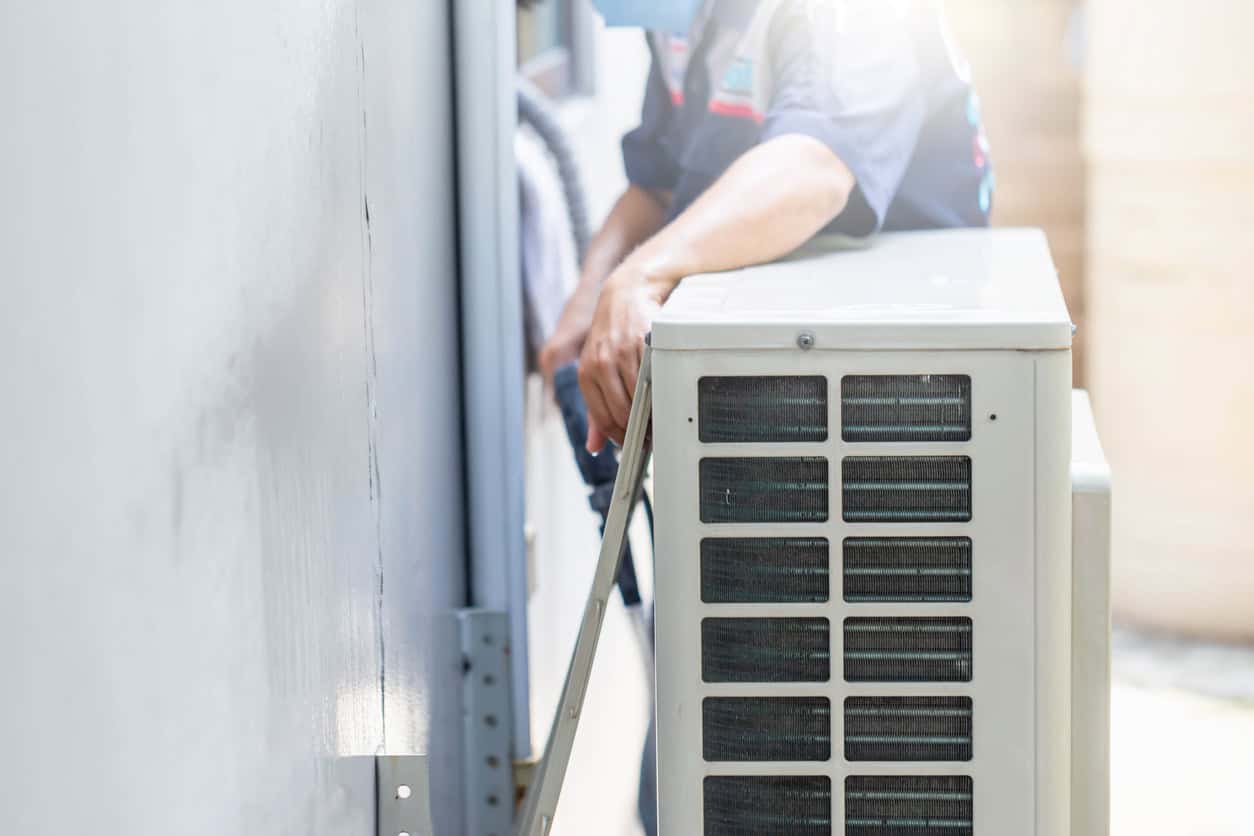If your home needs a new HVAC system, you might be wondering how long it will take to install a new one for your home.
The truth is that it depends on the complexity of the replacement and a few other factors. Typically, a straightforward replacement can take anywhere from 4 to 8 hours. However, if you’re switching the type of system, or it’s a rehaul of your ductwork and rewiring, it can take 1 or 2 days to complete. Unforeseen challenges or extensive modifications may stretch it to 3 to 5 days or more, but this isn’t always the case.
Our experts put forth this guide to help explain some factors contributing to replacement times and ways to prepare for your new installation.
Factors affecting HVAC replacement time
Typically, a straightforward replacement can take anywhere from 4 to 8 hours. However, if you’re switching to a completely different type of system or your installation Here’s a list of things that can affect the length of an HVAC replacement.
Home or Building Size
The size and layout of your home directly affect the duration of the HVAC installation process.
Compact spaces have smaller system requirements. Single-family homes are generally smaller and, therefore, don’t require as much time to replace a system and ensure it works.
Larger or multiple-storey homes require stronger systems or even multiple units to regulate the temperature throughout the space. This can extend the installation time as technicians work to accommodate the additional complexity and ensure the system operates optimally across all areas of the home.
Installation Complexity (Special Features, Multiple Components, etc.)
Installations with advanced features, such as smart thermostats, zoned systems, and whole-home humidifiers, add layers of complexity and require extra time for setup and configuration.
Geothermal heat pumps, for example, take a while to install as they require professionals to dig deep beneath your home’s property or under a nearby pond. This can take a bit of time for the initial inspection and approvals. Then, technicians gather the right contracting teams (plumbers, construction and landscaping teams) to ensure the installation is done correctly.
Type of Unit and Fuel Type
The type of HVAC unit and the fuel it uses (electric, gas, oil) can significantly impact installation time. Some systems, like electric heat pumps, may be quicker to install than traditional gas furnaces, which require additional steps to safely connect to gas lines.
The fuel type impacts the setup (e.g., vents, water drains, filtration) and preparations required to accommodate it.
- Packaged Systems
Packaged systems, often found in both residential and commercial settings, are known for their convenience and compact design. Typically, the installation can be completed within a day (approximately 4 to 8 hours). This is because these systems come pre-assembled, requiring only an external inspection and connection to your home’s ductwork for a quick and efficient setup.
- Split Systems
Split systems, which separate the cooling and heating units, can be flexible in their installation. Usually, it takes about 1-2 days to set up. This includes an inspection of both indoor and outdoor components, ensuring that every feature integrates seamlessly for optimal performance.
- Ductless Mini Split Systems
These are game changers for homes without ductwork. Installation is reasonably quick, averaging between 1 and 3 days, depending, of course, on the number of units required.
The process includes:- Mounting the indoor and outdoor units.
- Connecting refrigerant lines.
- Configuring the system for temperature control.
- Hybrid Systems
Hybrid systems, combining the efficiency of an electric heat pump/AC with a gas furnace, may require a more detailed installation process, usually completed within 2-4 days. This includes a comprehensive inspection of existing ductwork, installing the heat pump for efficient cooling, and integrating the furnace for reliable heating during colder months.
Important note: These are just estimations and are subject to change based on your specific home layout, existing infrastructure, and your HVAC installer. For a more precise timeline, contact Anderson Air, and we’ll give you an estimate.
Location
The installation location is also critical. Hard-to-reach areas, like attics or tight crawl spaces, can challenge even the most skilled technicians, leading to longer installation times. Professionals must ensure the location meets safety regulations according to local legislation.
Project Scope and Unforeseen Issues
The overall scope of the installation project—including the removal of the old system, potential modifications to your home’s infrastructure, and the integration of the new system—can vary widely, impacting the timeline.
Unexpected issues like structural challenges, outdated wiring, or incompatible components require on-the-spot solutions and possibly additional parts or labor, extending the project’s length.
Preparing for Your HVAC Installation: A Quick Guide
While we recommend leaving the installation to a pro, there are some things you can do to promote a quick, successful process:
- Know Your Heating Options: Research the different heating systems available, as this will help you make informed decisions about your home’s needs.
- Prioritize Efficiency: Energy-efficient models may have higher upfront costs but will save you money in the long run through reduced utility bills. Look for systems with a high Seasonal Energy Efficiency Ratio (SEER) and Heating Seasonal Performance Factor (HSPF).
- Aim for High-Quality Installation: Find reputable HVAC contractors with proven expertise. A high-quality installation by experienced technicians is crucial for your system’s longevity and efficiency.
- Understand the Costs: Prepare financially by requesting detailed quotes from several contractors. Ensure these estimates include the cost of the unit itself, installation, and any additional services (e.g., ductwork modifications).
- Schedule an Inspection: Before installation, have a professional inspect your home to identify any problem areas (insulation upgrades or duct sealing). This can help save you money by minimizing unforeseen costs.
- Prepare Your Home: Make the work area accessible to technicians by removing obstacles. Consider covering furniture and valuables to protect them from dust or debris during installation.
Hiring a Professional vs. DIY HVAC Replacement
Many home and property owners are often torn between attempting a DIY replacement or hiring a professional. Each option has benefits, but for a task as complex and critical as HVAC replacement, professional installation offers distinct advantages in terms of safety, warranty protection, long-term cost savings, and the choice of equipment.
Manufacturer warranties often have specific terms that require installation by certified professionals to remain valid. This part alone can significantly impact long-term savings and peace of mind.
Safety is another paramount concern. HVAC systems involve complex electrical wiring, gas lines, and other elements that pose significant risks if handled incorrectly. Professionals have the training and tools to ensure the installation is done safely, reducing the risks of accidents or costly mistakes that could lead to higher bills, damage and injuries.
Additionally, professionals bring a wealth of experience in equipment choice and sizing. Professionals bring expertise in assessing your home’s needs and recommending systems that offer excellent performance, cost-efficiency, and energy savings.
While a DIY project may seem cost-effective initially, the potential for incorrect installation, safety hazards, voided warranties, and inefficiencies can lead to greater expenses and headaches down the line. Professional installation guarantees a faster, safer, and more reliable process, ultimately providing better value and comfort in your home.
Trust River Valley for quick, reliable HVAC installations.
In the heart of the tri-state area, River Valley Air Conditioning is your ally in ensuring your home remains a haven of comfort and warmth. Adopting a new HVAC system can be daunting for any customer.
That’s why our team is dedicated to providing speedy and reliable installations and caring service throughout the process. Whether you live in Laughlin, Nevada, Bullhead City, Arizona, or southeast California, call River Valley. We promise excellent service at a reasonable price.
Connect with us today and make your first step towards a cooler, more comfortable home in the tri-state area. With River Valley, you’re always in good hands.

